The Shocking Story You Never Knew Behind Marilyn Monroe’s Skirt Scene
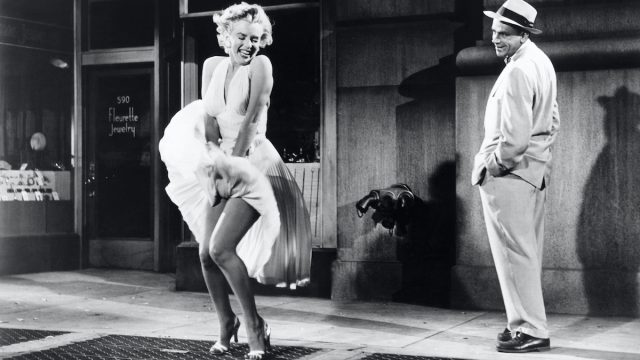
Marilyn Monroe was already a success when The Seven Year Itch came out in 1955, but that film turned her into an icon. Monroe had starred in 1953’s Gentlemen Prefer Blondes, How to Marry a Millionaire, and nearly two dozen other films at that point, transforming herself from brunette Norma Jean to blonde bombshell Marilyn Monroe in the process. But the road to fame was littered with personal traumas and crises for Monroe. Yes, the white halter dress scene in The Seven Year Itch made Monroe a legend, but it also cost her a major loss in her personal life. Read on to see what went on behind the scenes of one of the most memorable moments in cinematic history.
RELATED: Frank Sinatra Died Believing This Rumor About Marilyn Monroe, New Book Says.
The Seven Year Itch scene transformed Marilyn Monroe from a star to a legend.
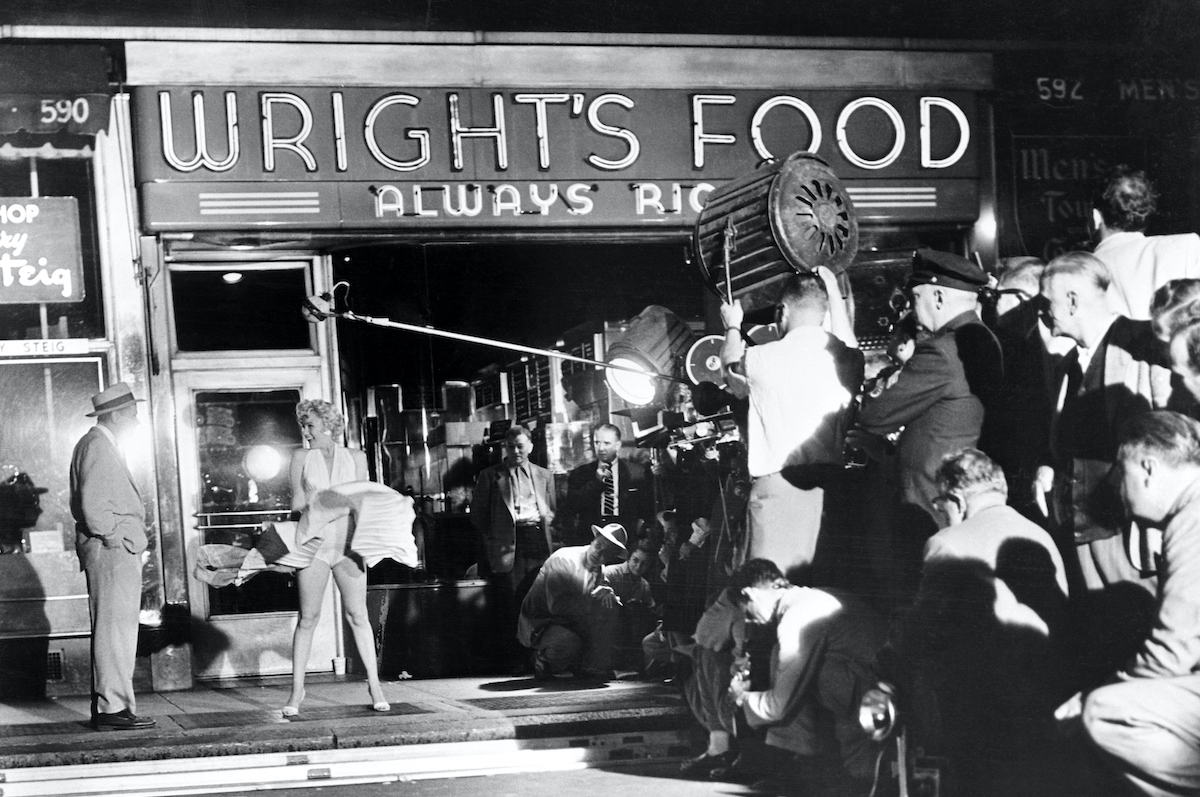
The Seven Year Itch was one of the biggest box office successes of Monroe’s career and that’s in large part because of an infamous scene, set up in the middle of New York City’s Midtown, where Monroe, in a billowy white halter dress, stands over a subway grate and catches the breeze of a passing train.
The movie centers on a middle-aged executive (Tom Ewell) who gets entangled with Monroe’s character, who lives in his apartment building, while his wife is away with their kids for the summer. In the scene, Ewell’s and Monroe’s characters leave the movies and she pauses over the subway grate to feel the breeze on the hot night, which causes her skirt to blow up. “Isn’t it delicious?” she says. As The New York Times reports, it became known as “the shot seen around the world.”
The scene was shot late one night in mid-September 1954 and director Billy Wilder invited members of the press and public to watch to build buzz about the movie. According to The New York Times, “hundreds of gawkers, almost all men … catcalled and yelled things like, ‘Higher! Higher!’ as Ms. Monroe’s dress blew up over her head. For two hours, the men watched from surrounding buildings and from the street.”
But one of those men in the crowd didn’t like what he saw: her husband at the time, Joe DiMaggio.
RELATED: 50 Iconic Movie Roles That Almost Went to Someone Else
DiMaggio and Monroe had only been married for eight months by the time she filmed The Seven Year Itch.
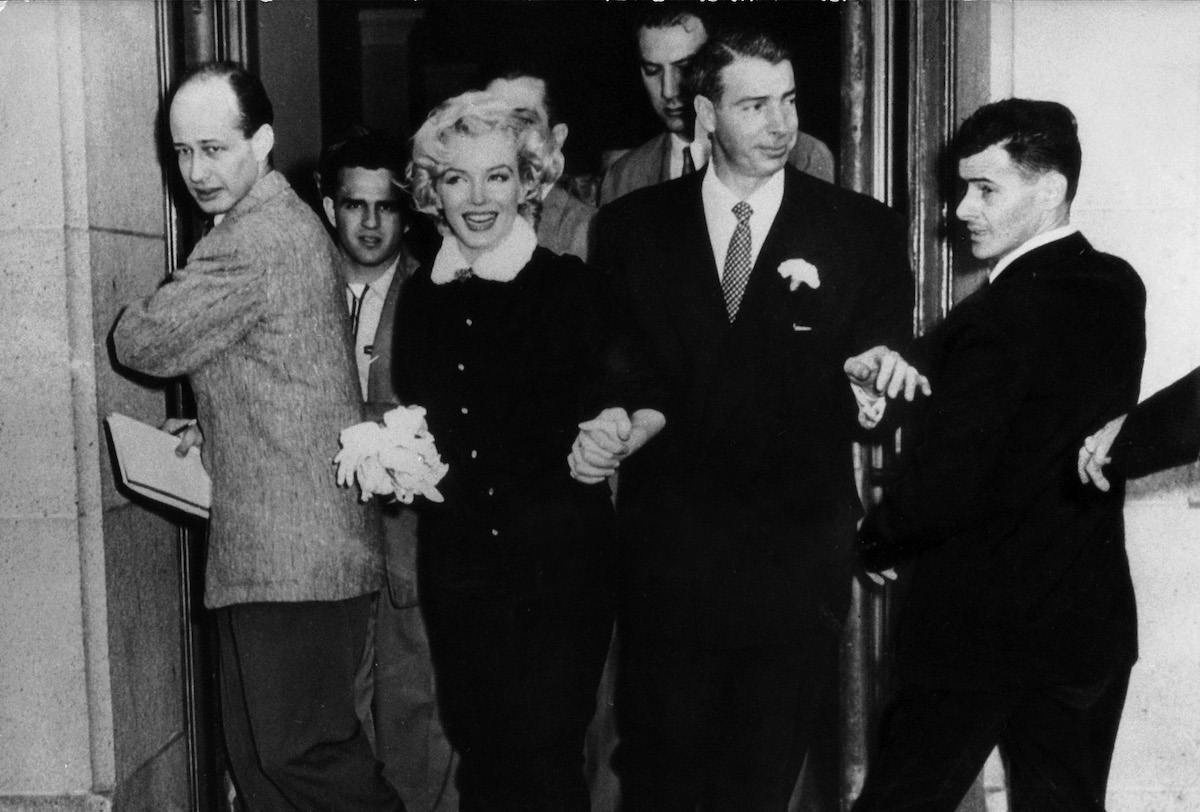
Marilyn Monroe was married to her second husband, New York Yankees star Dimaggio when she made The Seven Year Itch. Their romance reportedly began in 1952, when he arranged a dinner date with her, and the two began a highly publicized romance.
“The truth is that we were very much alike,” Monroe said in her memoir My Story, written by Ben Hecht. “My publicity, like Joe’s greatness, is something on the outside. It has nothing to do with what we actually are.”
The pair married in Jan. 1954 at City Hall in San Francisco. “We knew it wouldn’t be an easy marriage,” Monroe told Hecht. “On the other hand, we couldn’t keep on going forever as a pair of cross-country lovers. It might begin to hurt both our careers.”
Ultimately, it was another factor, not distance, that caused the marriage to end: DiMaggio’s jealousy.
DiMaggio came to see the scene being filmed and he “didn’t like what he saw,” the director said.
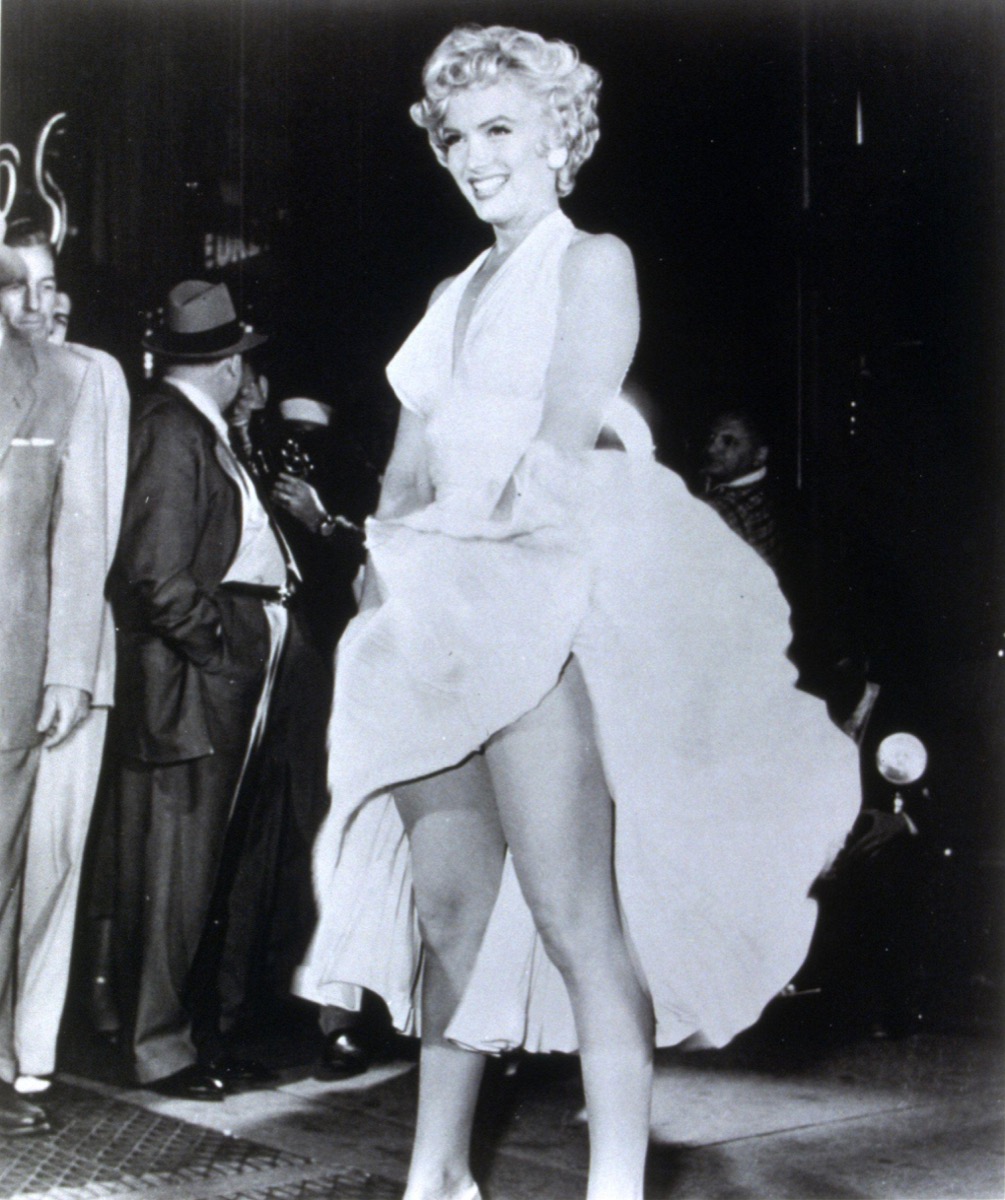
DiMaggio had a reputation for getting green with envy, according to his biographer Richard Ben Cramer. His book, Joe DiMaggio: A Hero’s Life, recounts the breakdown of the Monroe-DiMaggio relationship.
Paradoxically, it was Monroe’s sex appeal—the very thing that made her a star—that led to the end of her marriage with DiMaggio. According to Cramer, he was notoriously jealous of Monroe’s co-stars, the directors she worked with, and even the hairdressers and makeup artists that got her ready on set.
The final straw was that fateful night on the set of The Seven Year Itch. According to The New York Times, DiMaggio was nearby, waiting for her at the St. Regis Hotel where they were staying. He hadn’t planned on visiting the set that night, but columnist Walter Winchell had allegedly persuaded him to see the excitement. “He didn’t like what he saw, or what everyone else was seeing,” director Wilder said of DiMaggio in his biography Nobody’s Perfect.
The New York Times says that the couple had “a screaming fight” late that night and the next morning, Monroe’s bruises reportedly had to be covered up with makeup. She filed for divorce three weeks later.
Monroe would later say The Seven Year Itch scene and the resulting iconic publicity shot “exposing my legs and thighs, even my crotch—that was the last straw” in her marriage to DiMaggio.
RELATED: For more up-to-date information, sign up for our daily newsletter.
DiMaggio helped Monroe in the last stages of her life.
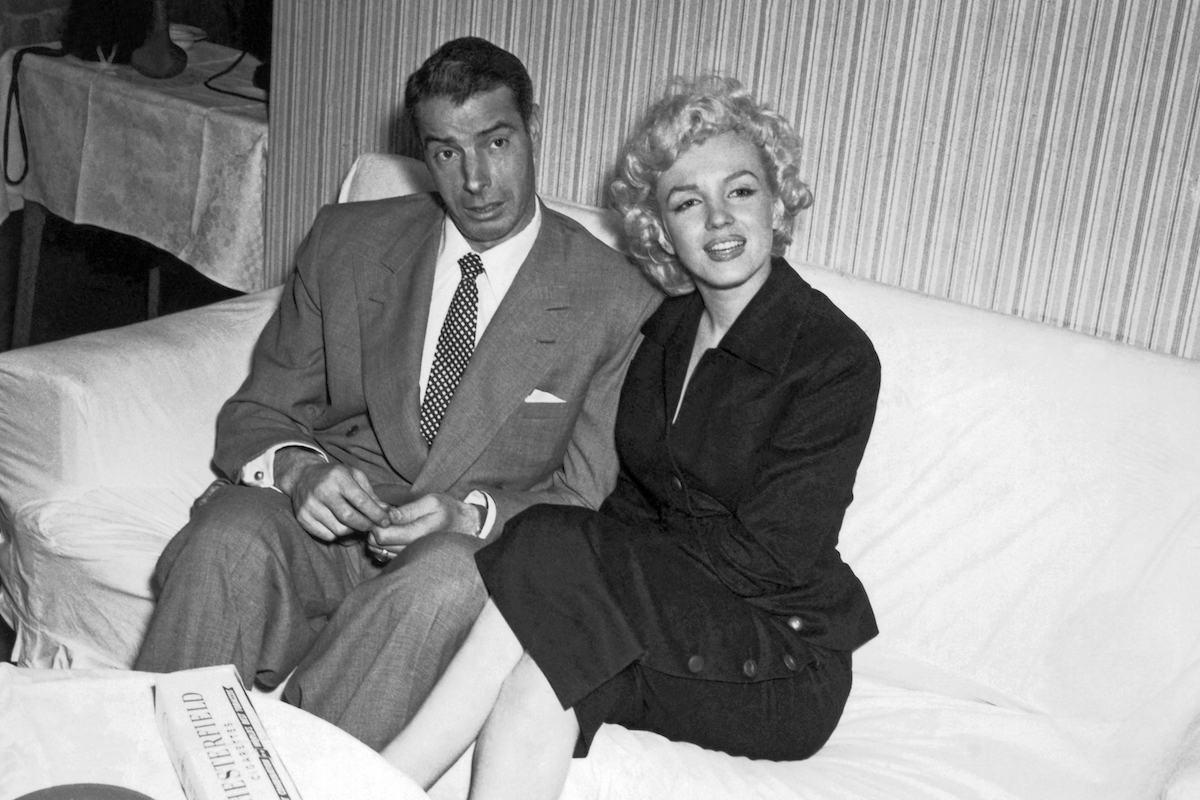
Even after their split, however, DiMaggio held a candle for Monroe. “I love you and want to be with you. … There is nothing I would like better than to restore your confidence in me. … My heart split even wider seeing you cry in front of all those people,” he wrote upon seeing her announce the divorce, according to Closer.
Monroe would go on to marry a third time, to playwright Arthur Miller, a year later in 1956. That marriage lasted five years, but was beset by Monroe’s increasing decline into drug misuse and mental health issues. After the Miller marriage dissolved in 1960, Monroe’s psychiatrist Dr. Marianne Kris committed her to the Payne Whitney Psychiatric Institute in early 1961.
In a letter to her other psychiatrist, Dr. Ralph Greenson, she wrote of the horrors she experienced on the inside. “There was no empathy at Payne-Whitney—it had a very bad effect—they asked me after putting me in a ‘cell’ (I mean cement blocks and all) for very disturbed depressed patients (except I felt I was in some kind of prison for a crime I hadn’t committed). The inhumanity there I found archaic,” she wrote.
Despite wishing to leave, Monroe was trapped inside the facility for 23 days. Finally, she appealed to her ex DiMaggio for help. Monroe biographer Charles Casillo told Closer Weekly that DiMaggio demanded that Monroe be released. “He went to the front desk and said, ‘I want my wife. And if I don’t get her, I’m going to take this hospital down brick by brick,’” Casillo said. “She was out the next day.”
Monroe and DiMaggio remained friends until Monroe’s death.
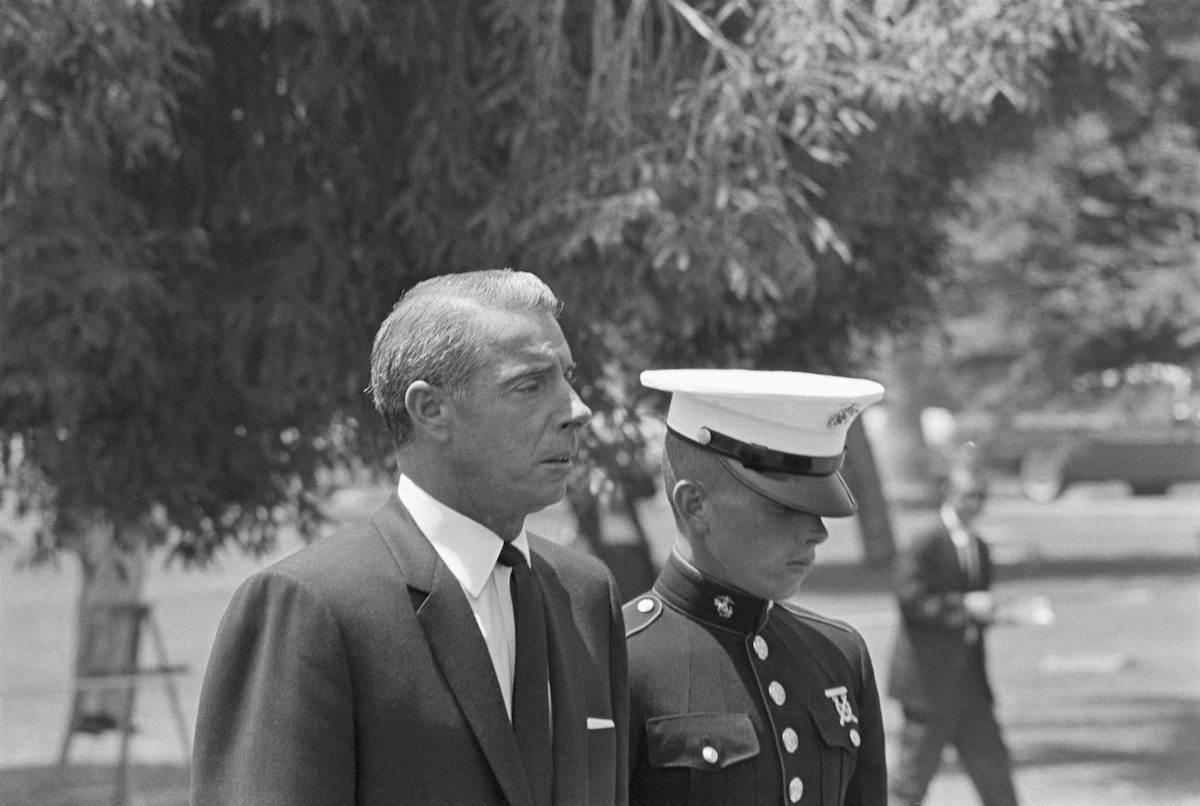
Despite their marriage not enduring, Monroe and DiMaggio remained friends until she died in 1962 by suicide. It was DiMaggio, not Miller, who arranged for her funeral.
“I’ll go to my grave regretting and blaming myself for what happened to her,” DiMaggio reportedly said, according to the biography Dinner With DiMaggio.
His longtime lawyer Morris Engelberg told Vanity Fair the baseball great was thinking of Monroe on his deathbed in 1999. “I’ll finally get to see Marilyn” were reportedly DiMaggio’s final words.
RELATED: How Old 100 Iconic Stars Would Be If They Were Alive Today.